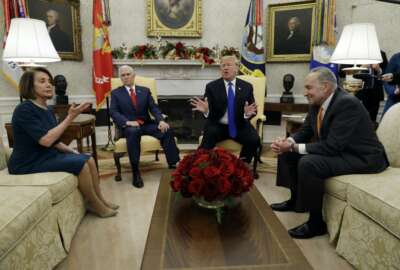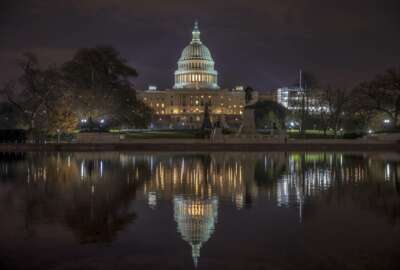
‘Autopilot’ government spending nearly doubled over last 20 years. But should Congress pump the brakes?
A leading Republican on the House Oversight and Government Reform Committee has expressed interest in taking a closer look at spending that's on "autopilot," an...
Amid efforts to avert a partial government shutdown on Dec. 21, a leading Republican on the House Oversight and Government Reform Committee has expressed interest in taking a closer look at government spending that’s on “autopilot,” and not ordinarily part of the annual congressional appropriations process.
Rep. Gary Palmer (R-Ala.), the outgoing chairman of the intergovernmental affairs subcommittee, urged members and the upcoming Democrat majority to take a closer look at the ballooning of mandatory government spending and spending authority.
“You can’t have accountability without an appropriations process. When you put it on autopilot, you’re basically not paying attention,” Palmer said at a hearing Tuesday. “I mean, it’s not like a driver-less car. You have to exercise oversight.”
The Government Accountability Office told the subcommittee that between FY 1994 and 2015, the amount of mandatory spending and agency spending authority grew by 88 percent. In 2015, that amounted to more than $3.2 trillion.
“As a result of the growth of these authorities, more budget authority is available to agencies that do not require them to await congressional action to incur obligations,” Tranchau Nguyen, the GAO’s acting director of strategic issues, told the subcommittee.
While Congress does not review these spending authorities each year as part of the annual appropriations process, lawmakers can revisit them at any point.
“The automatic nature of such appropriations makes it important that Congress monitor them and
periodically undertake a more formal review, appropriately through the committee hearing and
investigative process,” Robert Weissman, president of the consumer advocacy group Public Citizen, told lawmakers.
Since FY 1995, agencies have established 129 new accounts with offsetting collection authority, which allows them to collect fines, charge fees, or charge for permits, among other things.
“If we continue on autopilot, we’re going to go into the ditch,” Palmer said. “It’s going to be a catastrophe for the country.”
GAO found the Postal Service made the most use of this authority, collecting $74 billion through its Postal Service Fund in FY 2015. However, USPS also does not receive funding through congressional appropriations.
The Agency Accountability Act, which Palmer introduced in February 2017, would send most fees, fines and penalties collected by agencies to the Treasury. Agencies would only be able to use those fees and fines if Congress approves them in an appropriations bill.
“There’s not one word in the entire bill that would give any indication whatsoever that we would deny these funds from an agency,” Palmer said. “They just need to be constitutionally appropriated and constitutional oversight needs to be exercised.”
The bill doesn’t apply to fees collected by USPS or the Patent and Trademark Office. The latter agency already sends Congress a yearly report on its annual collection of fees.
James Wallner, a senior fellow at the R Street Institute, told lawmakers that the Palmer bill would bring offsetting collections out into the open.
“The vast majority of Americans don’t know what these things are. That doesn’t mean that they won’t support them. But I think that they have a right and an expectation that their representatives in Congress are going to debate these programs,” Wallner said.
Rep. Matt Cartwright (D-Pa.) pushed back against the committee majority characterizing mandatory spending as “backdoor spending.”
“What we’re talking about when we say mandatory spending is a legally authorized expenditure that Congress has debated, amended and approved in the open,” Cartwright said.
“It is authorized,” Palmer said in response. “But it’s authorized by past congresses … When we talk about backdoor spending, or whatever you want to call it, what we’re really talking about is exercising fiscal oversight so that we can get a handle on this.”
Three agencies — the Department of Health and Human Services, the Social Security Administration and the Treasury Department — accounted for more than 90 percent of the total mandatory spending in FY 2015.
To put these numbers in perspective, the Congressional Budget Office estimates that mandatory spending totaled about $2.5 trillion in FY 2017, more than double the $1.2 trillion spending package lawmakers approved that year.
HHS accounted for the largest amount of spending authority and permanent appropriations in FY 2015, with about $979 billion, or about 30 percent. SSA, by comparison, accounted for about 28 percent of total government spending authority and permanent appropriations.
Copyright © 2024 Federal News Network. All rights reserved. This website is not intended for users located within the European Economic Area.
Jory Heckman is a reporter at Federal News Network covering U.S. Postal Service, IRS, big data and technology issues.
Follow @jheckmanWFED





